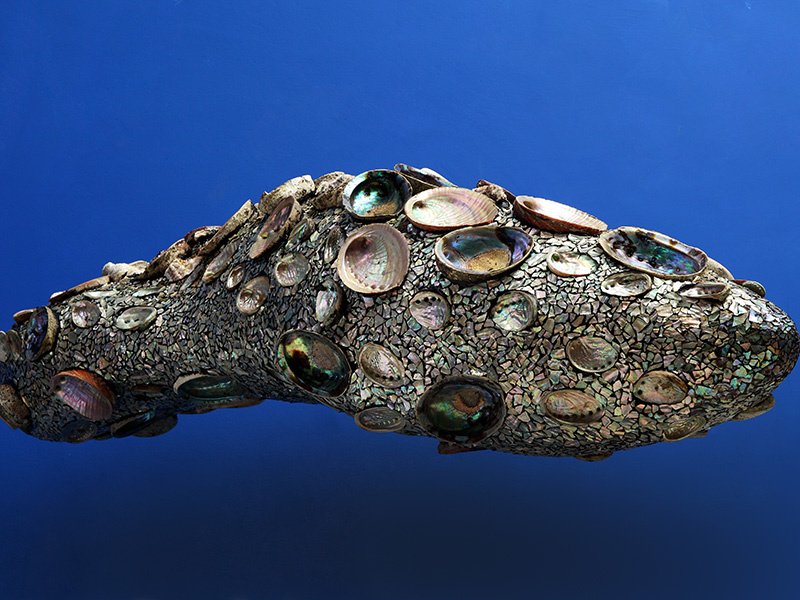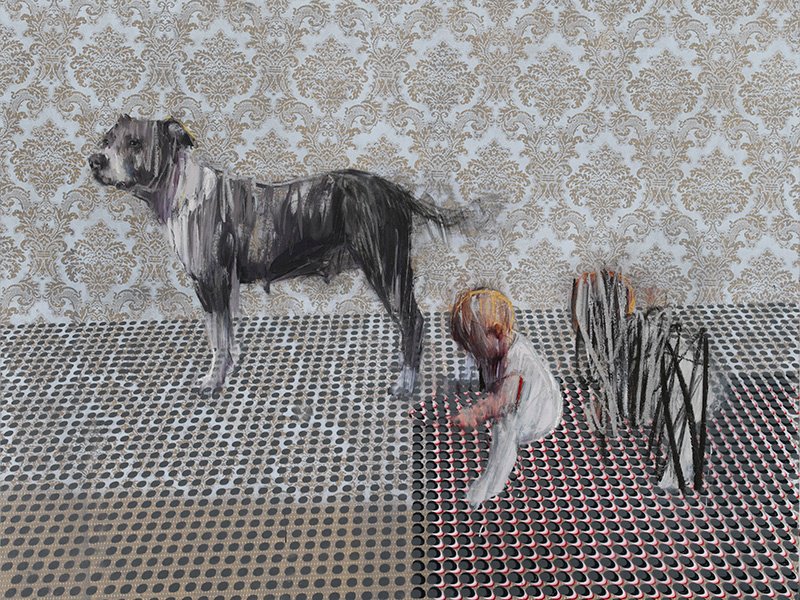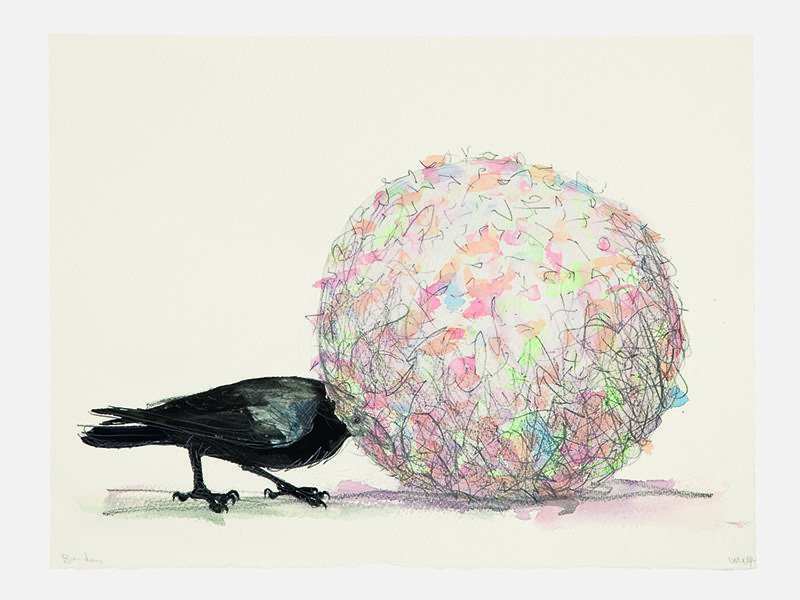Contemporary Artists Inspired By Animals
Creatures of the natural world have long featured in the history of art, and today’s artists continue to depict them, but in ever more creative ways
Creatures of the natural world have long featured in the history of art, and today’s artists continue to depict them, but in ever more creative ways
Since the dawn of civilization, animals have played an integral role in human life, as well as in our art. From the Paleolithic-era paintings of horses and bulls gracing the walls of the Lascaux caves, to the embalmed shark of Damien Hirst’s 1991 blockbuster, The Physical Impossibility of Death in the Mind of Someone Living, our furred and feathered friends (and foes) have been a source of profound inspiration, metaphor, and awe.
Since the dawn of civilization, animals have played an integral role in human life, as well as in our art
Today, the animal kingdom continues its role as muse to the contemporary art world, and in increasingly varied forms. Here, we meet four contemporary artists from different corners of the world – a sculptor who works in seeds and taxidermy, for example, and a portrait artist whose specialty is parakeets. Through their shared use of animal themes and motifs, they show that the appeal of the natural world is as universal as it is enduring.
Leila Jeffreys
Photographer
Sydney-based photographer Leila Jeffreys is a portrait artist, although her subjects are of the feathered kind. Using a medium-format camera, she transforms her lifelong love affair with the parakeet into large-scale, full-color photographs that capture the birds’ personalities, in addition to rainbows of detail.

Jeffreys’ artistic process is a patient one. “It takes me about two years to complete a body of work for an exhibition,” she says, because getting to know her subjects, who are often wildlife rescue cases, is key. “I like to get the birds used to me and my equipment, to trust me, and that takes time. It’s not uncommon for me to visit the same bird over a year, and yes, there are some that grab me by the heartstrings.”
Jeffreys was privileged with an itinerant childhood, having been born in Papua New Guinea and raised in Perth, Australia, with a stint on a houseboat in Kashmir thrown in as well. In every locale, wildlife was always close to home, whether she was playing in the forest or nursing injured animals back to health.

“As an adult I craved the connection I used to have with animals as a child and started a personal project to photograph parakeets,” she says. “Friends liked my work, and that led me to a gallery.” Today, Jeffreys is represented by Olsen Irwin in Sydney and Purdy Hicks in London, and her prints range from A$900 to A$4,000 ($635-$2,830).
Yong Ho Ji
Sculptor
Korean artist Yong Ho Ji doesn’t quite depict animals, he sculpts what he calls “mutants” – imagined, hybrid beasts with hauntingly human features. “They have strong characters as well as sadness, like human beings,” Ji says of his favorite animals – sharks, lions, and buffaloes – which frequently appear, albeit reimagined, in his works, which sell for $50,000 to $150,000. Using recycled tires as his medium, he emphasizes his subjects’ strength and ferocity in the sinuousness of their muscles, often poised in aggressive stances that suggest attack.

Following his formal training in sculpture, which includes a BFA from Hongik University in Seoul, and an MFA from NYU, Ji adopted his unusual medium by chance. “I accidently found a place that had plenty of used tires stacked like a mountain near my town, and ‘monster’ came to mind,” Ji says. “I used those for the mutants without any hesitation. Mutants have a strong life force, which needs a tough, flexible skin.”
The mutants made their debut in 2007 at Insa Art Center in Seoul, and have since been shown in Taipei, New York, and Amsterdam. Ji’s latest works take the concept of animal mutations even further with his 2014 Origin series, where his medium shifted to iridescent seashells, and the creatures have been abstracted beyond the point of recognition. “They may seem like a spacecraft or deep-sea organism. Even I do not know what exactly they are since they are purely expressed from my imagination.”

Charming Baker
Painter
Somewhat of an art-world outsider, Charming Baker has never been represented by a gallery, nor studied fine art. Nonetheless, his prints, sculptures, and oil paintings can range in cost between £400 and £100,000 ($572-$143,000), and his stable of high-profile collectors includes Red Hot Chili Peppers bassist Flea, fellow artist Damien Hirst, and fashion designer Paul Smith.

In contrast to the glamor of showing in London, New York, and LA, Baker comes from a modest background – he left school at 16 and worked various manual jobs, including a stint as a former road digger in rural England, and this dissonance sometimes shows through in his art: “The gorilla is in a way a self-portrait,” says the London-based artist, referring to a recurring theme in his paintings. His 2011 Dignity Rides A Tricky Pony, for example, depicts a forlorn ape standing in the corner of a finely wallpapered room with a yelping dog at its feet. “It’s not that I think I’m strong, but rather, I kind of feel out of place in a cool urban setting. I kind of feel naive. Conspicuous.”
Throughout his diverse body of work, other animals – painted horses, kittens, and birds, or the faces of owls, bears, and sheep solidified as polished bronze masks – dually serve to express these underlying sentiments. “They’re metaphors for human behavior and types of people that put forth certain emotions and ideas,” he says. “Some of them are just beautiful to draw.”

Claire Morgan
Taxidermist
The foundations of Claire Morgan’s sculptural works are simple: the Belfast-born, London-based artist begins with minimalist shapes – dots, cubes, intersecting spheres. But through her use of flora and fauna, including painstakingly harvested dandelion seeds, or the carefully preserved bodies of cats, rabbits, deer, and birds, she brings this geometry to life, suspending her materials mid-air in frozen states of collision and explosions of color and meaning.

“For me, the different elements in my work signify different things,” says Morgan. “Decay, death, rebirth, the passage of time, and the movement and changes that go with this. Seeds physically embody potential energy; the birds and mammals are dead, but it’s these that often might bring a sense of life, reality, or movement to the works.”

Morgan received her formal training in fine art at the University of Ulster in Northern Ireland, and subsequently the University of Northumbria in England. Since 2008, she has been represented by Galerie Karsten Greve, which has shown her work at major art fairs including Art Basel Miami Beach and FIAC in Paris. Her institutional work includes The Gathering Dusk, a recent solo exhibition at the Musée de la Chasse et de la Nature in Paris, and she is currently working on a new installation for a forthcoming show at L’Artothèque d’Angers.